Books
Books

Enya: A Treatise on Unguilty Pleasures
Does music have to be smart or does it just have to go to the heart? In dazzling, erudite prose Chilly Gonzales’ musical memoir delves beyond the innumerable gold discs and millions of fans to excavate his own enthusiasm for Enya’s singular music and the mysterious musical herself, and along the way to uncover new truths about the nature of music, fame, success and the artistic endeavour.
Chilly Gonzales is one of the most exciting, original, hard-to-pin-down musicians of our time. Filling halls worldwide at the piano in his slippers and a bathrobe—in any one night he can be dissecting the musicology of an Oasis hit, giving a sublime solo recital, and displaying his lyrical dexterity as a rapper. In his book about Enya, he asks: Does music have to be smart or does it just have to go to the heart? In dazzling, erudite prose Gonzales delves beyond her innumerable gold discs and millions of fans to excavate his own enthusiasm for Enya’s singular music as well as the mysterious musician herself, and along the way uncovers new truths about the nature of music, fame, success and the artistic endeavour.
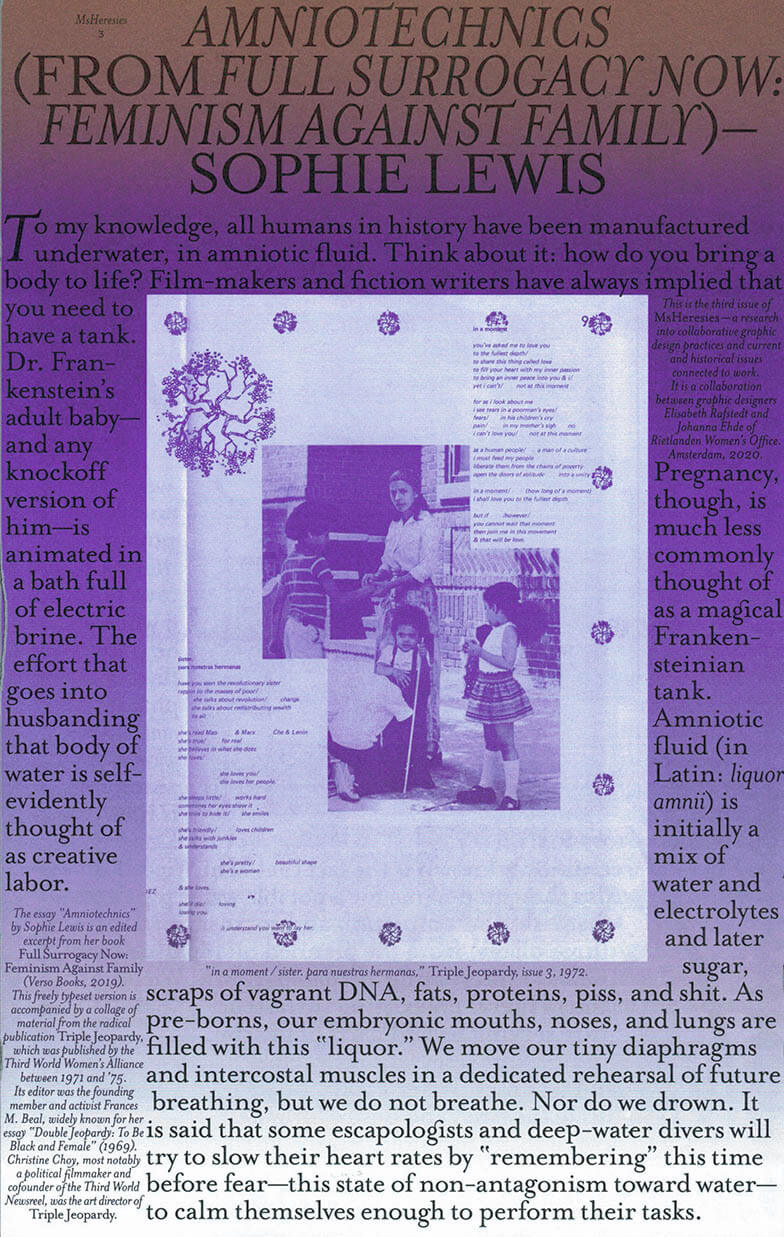
MsHERESIES 3 — AMNIOTECHNICS
Johanna Ehde, Elisabeth Rafstedt
Dedicated to the incredible – and incredibly beautiful – publication Triple Jeopardy (1971–75, by the Third World Women’s Alliance), as well as the ideas in Sophie Lewis’s book Full Surrogacy Now! – Feminism Against Family (Verso, 2019). Ms Heresies 3 is reprinting the book’s final chapter, the essay *Amniotechnics.*
Each spread weaves edited material from Triple Jeopardy with Sophie Lewis’s essay. These intuitive and meticulous compositions are the outcome of looking at Triple Jeopardy through the lens of collaborative graphic design. Reading, typesetting, collaging, painting, and ornamenting became a way of designing together while attempting an homage, a re-reading, and a cross-publication friendship.
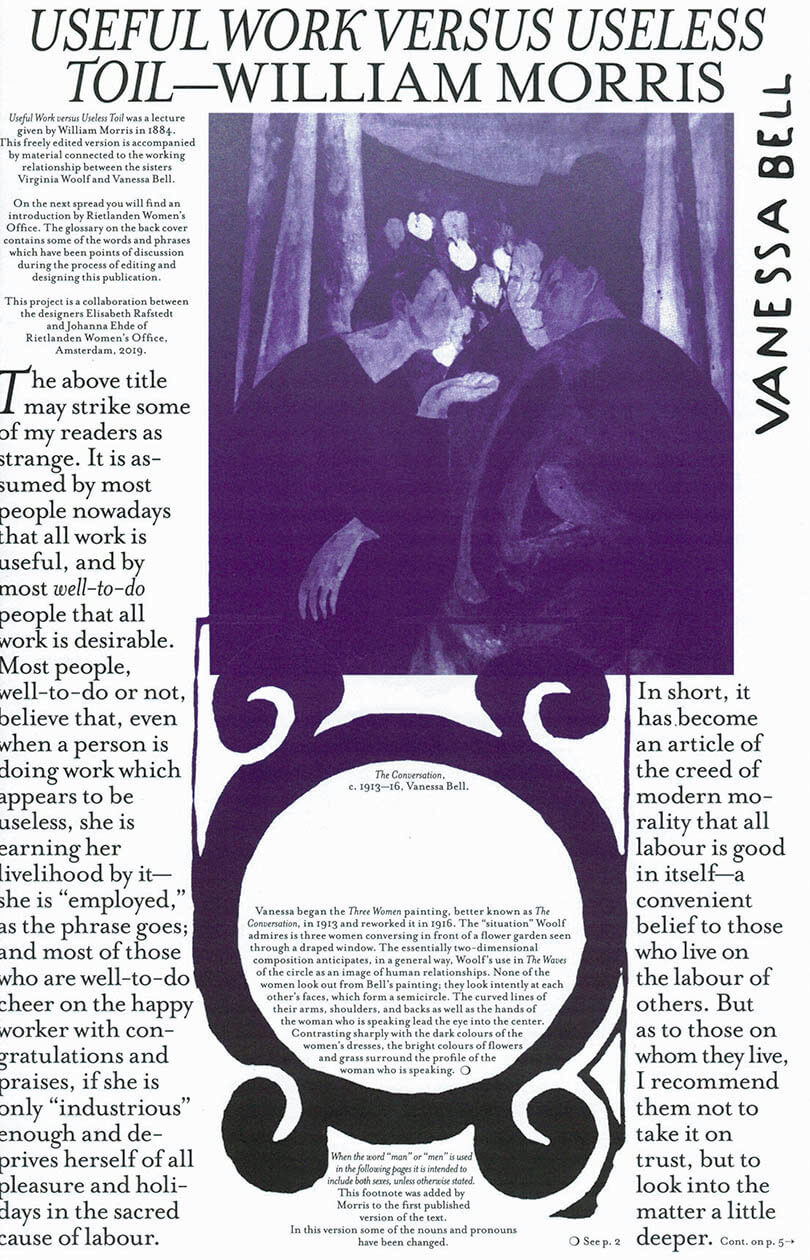
MsHERESIES 2 — USEFUL WORK VERSUS USELESS TOIL
Elisabeth Rafstedt, Johanna Ehde
The second issue of MsHeresies includes collages, paintings, and hommages to the work of sisters Vanessa Bell and Virginia Woolf, whose collaboration defied preconceived ideas of both text/image hierarchies, as well as rivalry at the cost of sisterhood. This visual essay is published alongside William Morris’s lecture Useful Work versus Useless Toil from 1884 which introduces the idea of the ornamental and its relationship to work and rest.
The ornamental can only come about under certain conditions: enough rest, agency, and variation of work. The ornamental is never an outcome or product of these conditions; but something intrinsically intertwined therein.
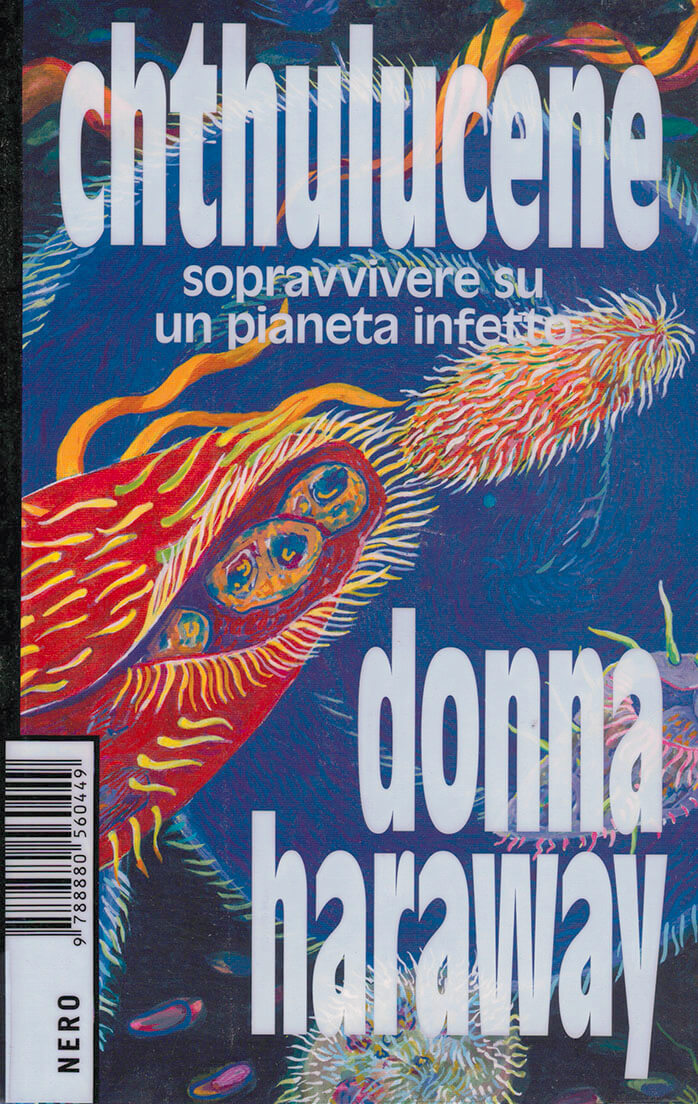
CHTHULUCENE
Italian edition
Cosa succede quando il genere umano, dopo aver irrimediabilmente alterato gli equilibri del pianeta Terra, smette di essere il centro del mondo? E nel pieno della crisi ecologica, che relazioni è possibile recuperare non solo tra individui umani, ma tra tutte le specie che il pianeta lo abitano? In questo testo denso ed emozionante, scritto in una lingua immaginifica che si ispira tanto alla fantascienza quanto alla grande lezione del femminismo radicale, Donna Haraway ci ricorda che tutto è interconnesso, tutto è contaminato, tutto ci riguarda. Contro i semplicismi delle discussioni sull’antropocene, Chthulucene immortala la centralità di Donna Haraway tra i più importanti e originali pensatori del nostro tempo.

Caccia alle streghe, guerra alle donne
La caccia alle streghe è tornata scatenare nel XXI secolo una nuova ondata di violenza, interpersonale e istituzionale, contro le donne. E anche oggi, come nel Medioevo, questa violenza misogina che demonizza la donna procede di pari passo con l’accumulazione capitalistica, che si sviluppa attraverso processi di espropriazione e distruzione dei rapporti di solidarietà e potere che regolano la vita delle comunità.
Silvia Federici esamina le cause profonde della guerra in atto, fatta non solo di violenza domestica e sessuale, ma anche economica e strutturale, il cui esito è ancora una volta quello di sovvertire i processi di riproduzione sociale per spaccare le comunità e aprire la strada all’individualismo funzionale al progetto neoliberista. Caccia alle streghe, guerra alle donne è un’indagine sulle cause di questa nuova violenza e una chiamata femminista alle armi, che attraverso la memoria e l’analisi del passato offre spunti inediti per le lotte a venire.
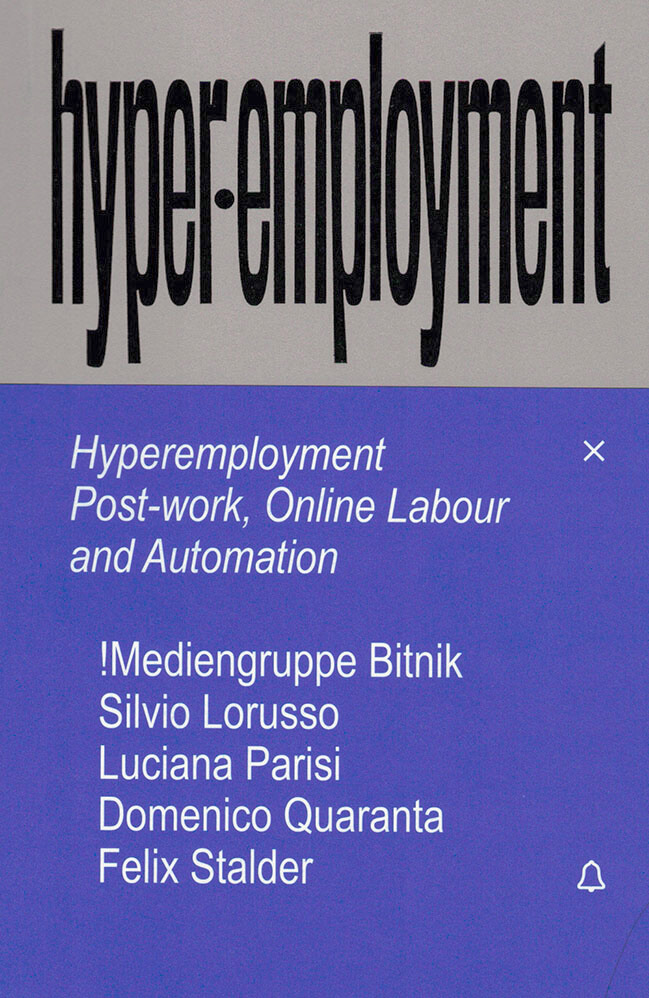
hyper-employment
Domenico Quaranta, Janez Janša
Hyperemployment – Post-work, Online Labour and Automation is an attempt to scrutinise and explore some of these issues. A catchphrase borrowed from media theorist Ian Bogost, describing “the Exhausting Work of the Technology User,” hyperemployment allows us to grasp a situation which the current pandemic has turned endemic, to analyse the present and discuss possible futures.
Edited by Domenico Quaranta and Janez Janša, featuring words by !Mediengruppe Bitnik (Carmen Weisskopf and Domagoj Smoljo) and Felix Stalder, Silvio Lorusso, Luciana Parisi, and Domenico Quaranta and works by !Mediengruppe Bitnik, Danilo Correale, Elisa Giardina Papa, Sanela Jahić, Silvio Lorusso, Jonas Lund, Michael Mandiberg, Eva and Franco Mattes, Anna Ridler, Sebastian Schmieg, Sašo Sedlaček, and Guido Segni.

Ductus
DUCTUS is the latest solo project by Paul Abbott, featuring 51 minutes of audio, across 12 tracks, and a 42 page booklet featuring new writing. DUCTUS was written and recorded in Edinburgh and Porto in 2019.
DUCTUS presents a playful weave of collapsing time through a number of speculative elements and fictional characters. Abbott feels his way through learning drums, rhythm and writing as fleshy research technologies. DUCTUS is the latest stage in a process considering sound, the body, imagination, and language through music. This features as part of ongoing investigations using real and imaginary drums, synthetic sounds, performance and writing.

Still Life
Issue 5 looks at ideas of restraint including interviews with HARVEY YOUNG about stillness and the Black body (18); KELINA A. GOTMAN about the myth of choreomania (34); CLAIRE SMITH* about her experience as a prison officer (62); and MAXINE LEEDS CRAIG about why straight, white men don’t dance anymore (76). It also includes a text from HENRI LEFEBVRE on dressage (2); tales from guardsmen about fainting and laughing on parade (29); photographs by EMMA BACKLUND of play wrestling (50); vintage images and contemporary stories of bondage from THE PRIVATE CASE (87); and a poem by HANNE GRASMO about piss play (101). Cover photo by Emma Bäcklund.
Contains sexually explicit material.

A Mycological Foray: Variations on Mushrooms
[Slightly damaged cover. Reduced price from 60 euros.] Foraging for mushrooms with John Cage: writing, art, photography and ephemera from an idiosyncratic chapter in the composer's life
Imagined as an extended mushroom-foraging expedition, John Cage: A Mycological Foray gathers together Cage's mushroom-themed compositions, photographs, illustrations and ephemera. Indeterminacy Stories and other writings by Cage are interwoven throughout the first volume within a central essay examining Cage's enduring relationship with mycology. Also included is a transcript of Cage's 1983 performance, MUSHROOMS et Variationes. The second volume is the inaugural reproduction of Cage's 1972 portfolio, Mushroom Book, authored in collaboration with illustrator Lois Long and botanist Alexander H. Smith. Readers are thus drawn through the landscape of Cage's mycologically centred oeuvre and interests, discovering assorted works, images, compositions, philosophies and ephemera, as one might encounter assorted fungi and flora while foraging.
John Cage: A Mycological Foray constitutes a new, idiosyncratic chapter in Cage's oeuvre, a departure from the composer's more established narrative.
American composer and music theorist John Cage (1912-92) was a pioneer of indeterminacy in music, electroacoustic music and a leading figure of the postwar avant-garde. His influence extended to the realms of dance, poetry, performance and visual art.
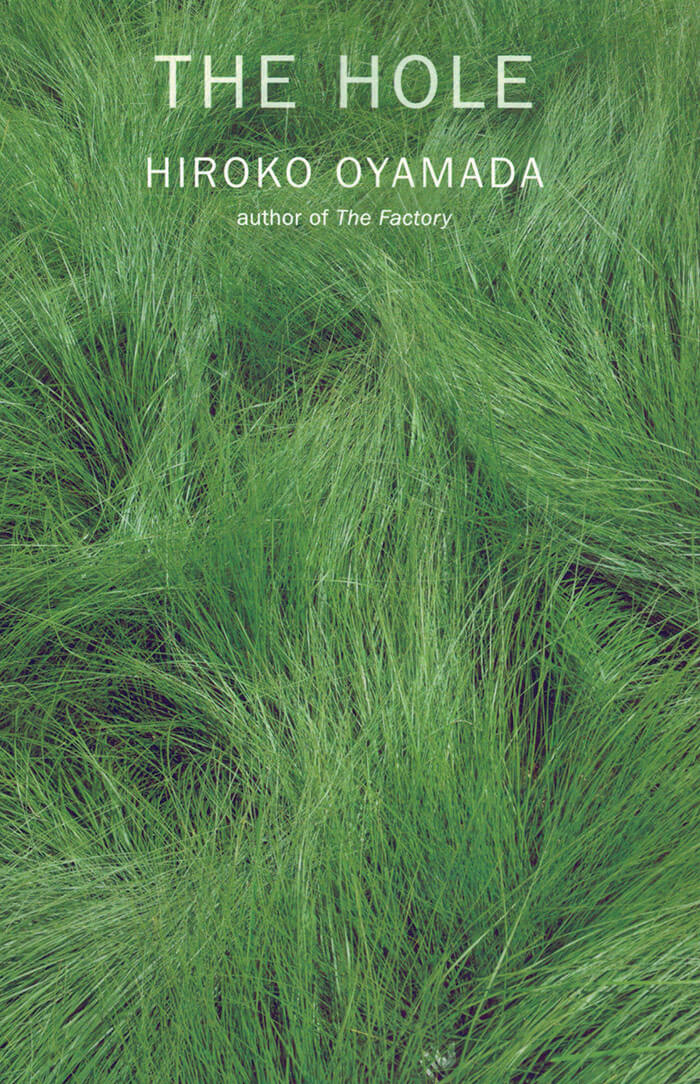
The Hole
One day, while running an errand for her mother-in-law, she comes across a strange creature, follows it to the embankment of a river, and ends up falling into a hole, a hole that seems to have been made specifically for her. This is the first in a series of bizarre experiences that drive Asa deeper into the mysteries of this rural landscape filled with eccentric characters and unidentifiable creatures, leading her to question her role in this world, and eventually, her sanity.
Winner of the 150th Akutagawa Prize in 2014
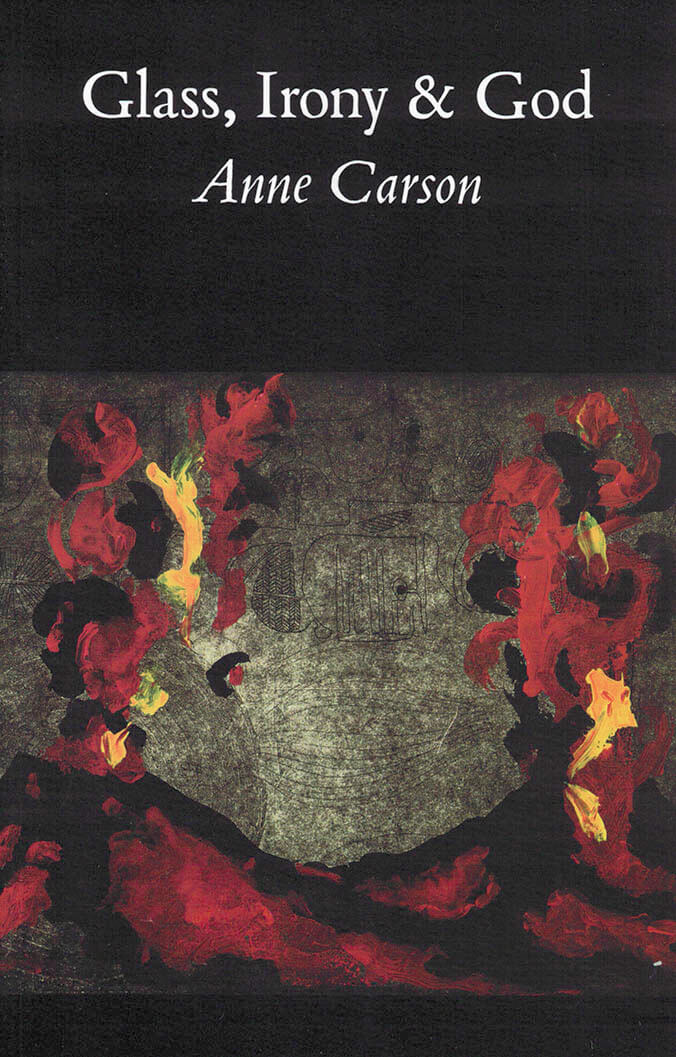
Glass, Irony & God
Known as a remarkable classicist, Anne Carson weaves contemporary and ancient poetic strands with stunning style in Glass, Irony and God. This collection includes: "The Glass Essay," a powerful poem about the end of a love affair, told in the context of Carson's reading of the Bronte sisters; "Book of Isaiah," a poem evoking the deeply primitive feel of ancient Judaism; and "The Fall of Rome," about her trip to "find" Rome and her struggle to overcome feelings of a terrible alienation there.
Anne Carson was born in Canada and teaches ancient Greek for a living.

Multiple Densities
This publication brings together works made between 2010 and 2013 that share the same principle: a method of constructing images of time by layering multiple moments, creating hybrids between photography and other media, documenting something that is positioned beyond our human ability to see.
Each series adds a different parameter to the principle, such as two- and three- dimensional space, scale, perspective, performance, installation and parallel events. The publication also features an alternative view on Mater’s practice with a chapter of research and process material.
With an essay by Maxine Kopsa. Design: Veronica Ditting.

Blackfishing the IUD (Yellow Papers 3)
Excerpts from Caren Beilin’s 2019 essay/memoir about reproductive health and the IUD, gendered illness, medical gaslighting, and activism in the chronic illness community.
“The moon is hollow. The moon is hollow says a certain contingent of people, because of aliens (and, also, the moon has experienced bangs on its surface that have apparently made it ring just like a bell).
These people are conspiracy theorists. Paranoid, conclusive, certain. Too certain. They connect the dots with their eager, enormous chalk. They want something to be true. They want, I think, something new to be true, and they are taken (as I am) with the moon being like a bell, two phonemes, moon, bell, beautiful and struck across each other’s false armor, mutable and beautiful.
The moon is a bell, as the theorist Georges Bataille, in 1931, said, ‘The sun is an anus.’ He was arguing about the beauty – the absolute energy – of the copula.
‘The verb to be is the vehicle of amorous frenzy,’ he wrote, the year that Benjamin unpacked his library, alone. The moon is a bell, and I believe this absolutely, sure. The IUD is the RA. The sexual force of the verb, is, to be, of my verbacious being, will knock any noun into the moon and beyond. Everything is a parody, can be anything. The moon is hollow and made of muleskin. The moon is hollow, insofar as it is coated with the agglutinate, the shining coat, of a limit. I cannot go into the moon with my eyesight. I can’t enter my womb from that time (in November 2015) and sit crosslegged by the device, at the base of its suspending embedding, in the oaty red fist of my uterus, and watch the metal loam off its rigid cross-branch – and leech into tissues and activate, or reanimate, flare, or push over my problem. I can’t spy the center of the inception or the core of my being. I only know the timing. My health deteriorated rapidly after it was in, and I know how horrible it is, to cease planning for trips, outings, applications, or children, waiting and watching for how bad and how soon, and that the moon is hollow
This pamphlet excerpts from Blackfishing the IUD, published in 2019 by Wolfman Books, Oakland. With thanks to Caren Beilin, Jacob Kahn, and Justin Carder.

A Textbook for the Ecocene
A Textbook for the Ecocene is a how-to guide for connecting to self, community and planet. The Ecocene is an emergent and imagined geologic era where all humyns are living in reciprocity with their ecosystems again. Each textbook chapter shares practical exercises to try at home, Earth-centered theory and spirituality, and interviews with Black and Indigenous Earth warriors—cultural workers generating planetary liberation in their everyday lives. These testimonios from Johanna Iraheta, Bruje Fuego, Raquel Lemus, Patty Denisse, Jasmine Nyende, Queen Hollins and Olivia Chumacero shine with wisdom and advice for new and seasoned Earth stewards alike. Created originally as Sarita Dougherty's DIY PhD Dissertation, A Textbook for the Ecocene is a curricula for eco-feminista educations, DIY degrees and planetary destinies. We are activating the Ecocene right now, one step at a time. What we pay attention to grows.
Size: 5" x 8.5", 158 pages, perfect bound
Self-published by Co—Conspirator Press with the support of Women's Center for Creative Work. Edited by Simone Krug, copy edited by Gowri Chandra and Demi Corso. Designed by MJ Balvanera, Riso-printed by Neko Natalia.

the monumental mismemberings
the monumental misrememberings is a meditation on death. It’s a curious insight on the creative and violent ways in which Black girls, women, trans women and femmes often become displaced, experience death, and subjugation as a result of patriarchal systems in America. This debut collection of poems by Mimi Tempestt operates through this specific lens, not to romanticize the pain of Black femme bodies, but to bring light to this sadistic truth. When we turn on the television, when we log into social media, when we look in the mirror, the normalcy of how often and creatively Black women are murdered weighs on our conscience. the monumental misrememberings addresses our unwillingness to grapple with these violences, and places front and center the realities faced by Black femmes.
Size: 5" x 7.5", 88 pages
Self published by Co—Conspirator Press with the support of Women's Center for Creative Work. Designed by MJ Balvanera, Riso-printed by Neko Natalia.
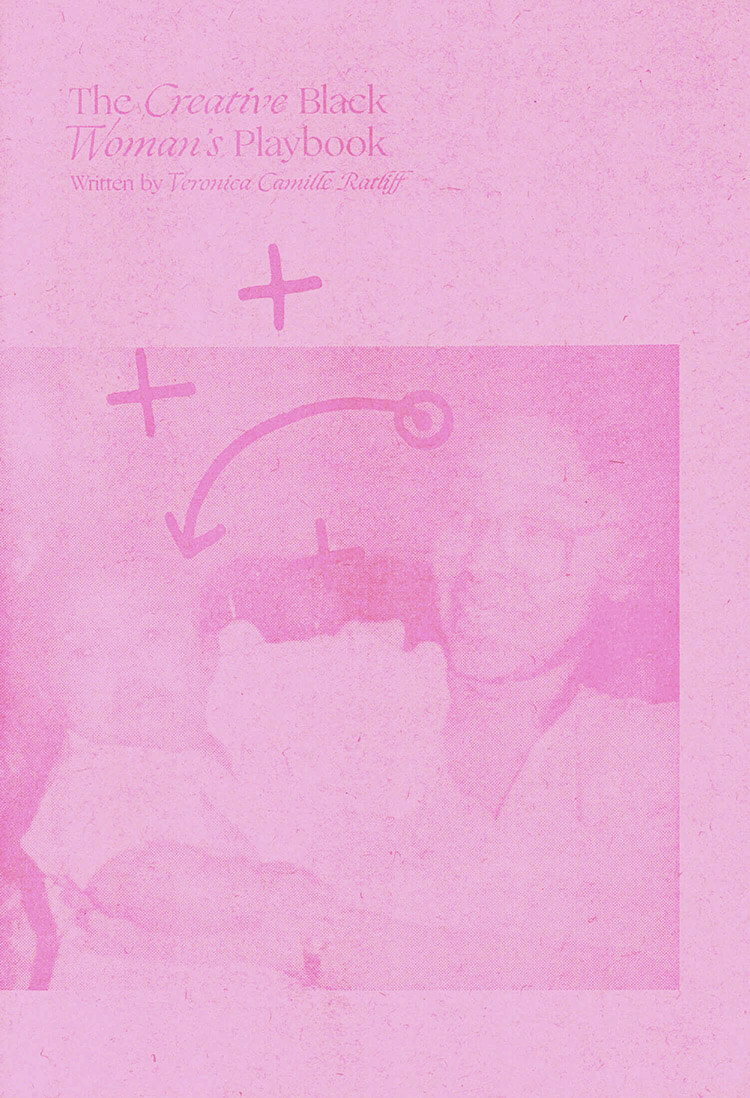
The Creative Black Woman's Playbook
An interactive guide for black women of all ages, to not only create the creative life they want, but to monetize every aspect of it. Visit creativeblackwomansplaybook.com for a Spanish version of the book.
Size: 5" x 7.5", 60 pages
Self published by Co—Conspirator Press with the support of Women's Center for Creative Work. Designed by MJ Balvanera, Edited by Sarah Williams and Hana Ward, Riso-printed by Neko Natalia, Illustrations by Hana Ward.
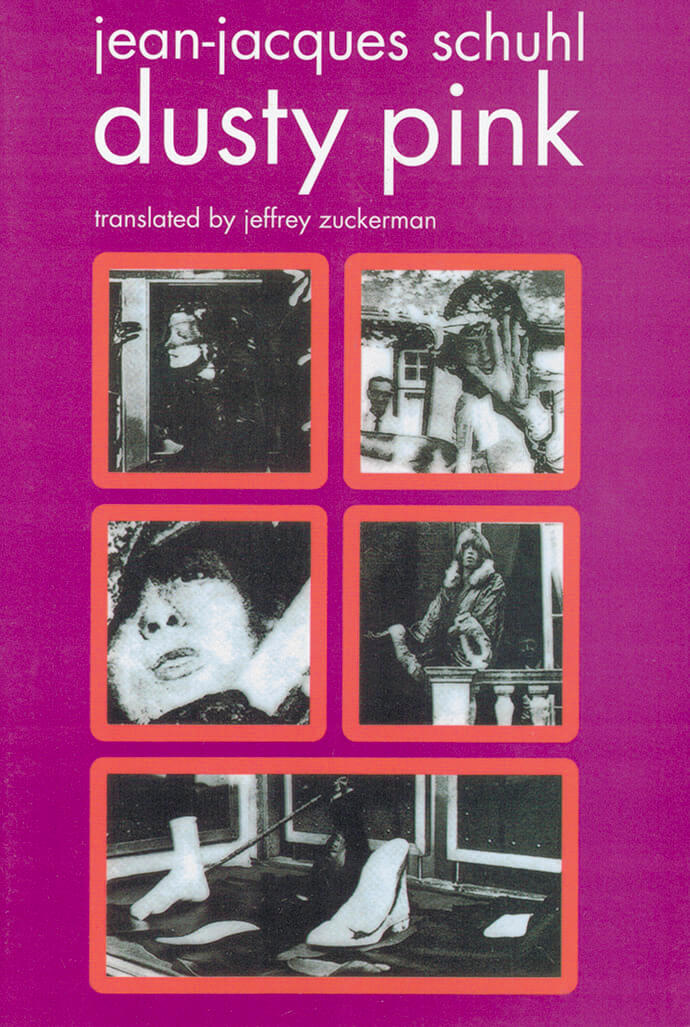
Dusty Pink
A cult classic in France, the first translation of a novel that captures a subjective stroll through an underground, glamorous Paris.
'finally there are the rolling stones who call for all these at the same time among them and around them: the policeman, the cross-dresser, the dancer, Frankenstein, the dandy, the robot'
—from Dusty Pink
Written with the hope of achieving a "dreary distant banality," Jean-Jacques Schuhl's first novel is a subjective stroll through an underground, glamorous Paris, a city that slips into the background but never disappears, hovering on the verge of its own suppression. An elegiac and luminous cut-up, Dusty Pink brings together race wire results, editions of France-Soir, the lyrics to well-known British songs, scripts from famous old films, pharmaceutical leaflets, fashion ads, and strips and scraps of culture in which the avant-garde and academicism blur in an overview of the cultural scene. This world of atmospheres, portraits, and dazzling associations of ideas creates a plane of shimmering surfaces.
Published in French in 1972, Jean-Jacques Schuhl's Dusty Pink became a cult classic. This is its first translation.
Cult author Jean-Jacques Shuhl won the Prix Goncourt in 2000 for his novel Ingrid Caven, which sold over 235,000 copies in France. It was his first book since Dusty Pink was published in 1972.
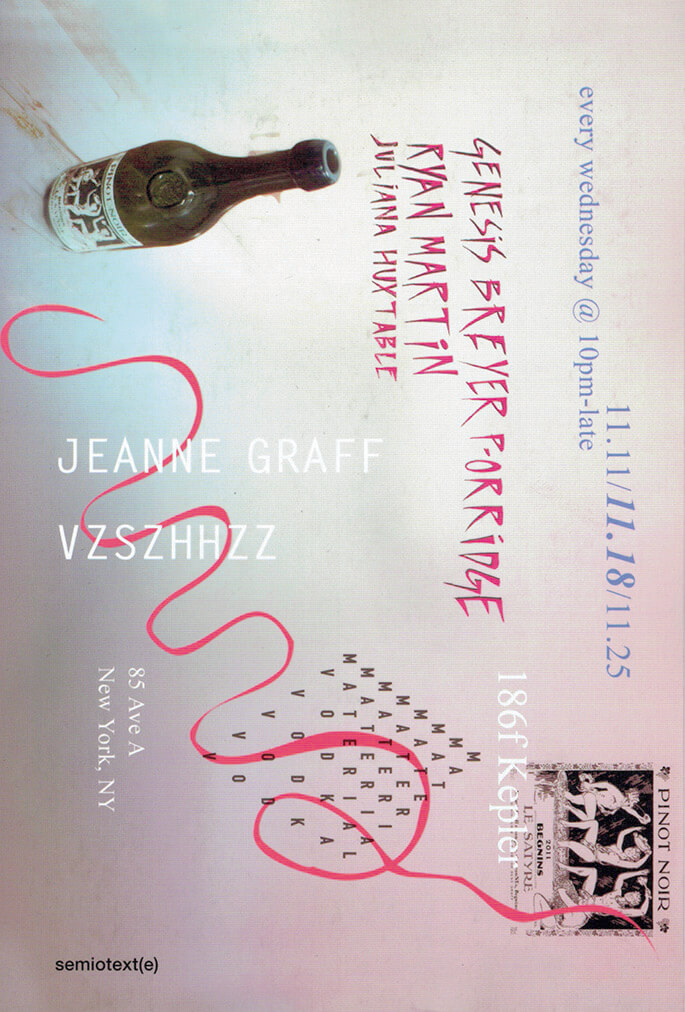
Vzszhhzz
Composed between destinations, in airplanes, trains, museums, and bars over three years, Jeanne Graff's Vzszhhzz captures the slight intersections of a loose group of artists and lawyers, restauranteurs, philosophers, wine-makers and boxers whose lives are conducted almost entirely in a second language. A loose chronicle masquerading as a novel, Vszhhzz - like Michèle Bernstein's All The King's Horses, the Bernadette Corporation's Reena Spaulings, and Natasha Stagg's Surveys - couches Graff's sharp observations in a laconic and ambient style. By not saying too much, Vzszhhzz says everything about the relation to time, cities, weather and smog that has become the lingua franca of a creative and transient life.
Writer and curator Jeanne Graff was born in Lausanne, Switzerland and lives in New York. She is a columnist for May Revue (Paris), works in a vineyard, and teaches at HEAD art school in Geneva. In 2014, Graff founded 186f Kepler, an art space without walls. She has organized numerous international exhibitions, and performs with her band Solar Lice. Graff recently completed a writing residency at Villa Noailles in Hyeres, France.

The Pain Journal
"The Pain Journal" is the last finished work by Los Angeles writer and artist Bob Flanagan and is the extraordinary chronicle of the final year of his life before his death from cystic fibrosis at the age of 43. Flanagan created performances with Sheree Rose that shocked and inspired audiences as he combined text, video, and live performance to create a highly personal exploration of childhood, sex, illness, and mortality.

Leash
Leash extends the logic of S&M to its inexorable and startling conclusion, darkly and hilariously revealing the masochistic impulse as the urge to disappear from the chores, obligations, and emotional vacuity of daily life.
No more jobs, no more taxes, no more checkbook, no more bills, no more credit cards, no more credit, no more money, no more mortgages, no more rent, no more savings, no more junk mail, no more junk, no more mail, no more phones, no more faxes, no more busy signals, no more computers, no more cars, no more drivers' licenses, no more traffic lights, no more airports, no more flying, no more tickets, no more packing, no more luggage, no more supermarkets, no more health clubs... While her current spends the summer researching public housing in Stockholm, a moderately wealthy, object-oppressed, and terminally hip New York female of a certain age seeks adventure in the sedate dyke bars of lower Manhattan. Finding none, she answers a personal ad. She is ordered to put on a blindfold before the first meeting with the woman she knows only as Sir. Not knowing what someone looks like turns out to be freeing, as do the escalating constraints that alienate her not just from her former life, but from her very conception of who she is. Part Georges Bataille, part Fran Leibowitz, this is the Story of O told with a self-referentially perverse sense of humor.

The Nancy Reagan Collection
THE NANCY REAGAN COLLECTION is a response to growing up queer and trans under the rise of HIV-AIDS. Crossing genres and generations, this performance novel remixes the AIDS archive through an ever-spiraling politics and aesthetics of mourning. Alternating chapters offer up a narrative throughline composed of hallucinogenic episodes from the perspective of a nameless, grieving protagonist in the midst of the global carnage of the Reagan dynasty. Part revenge, part fantasy, the book experiments with poetic practices that challenge conceptions of memory and morality, activism and escapism, grief and beauty.
Maxe Crandall is a poet, playwright, and director. He is the author of the chapbooks Emoji for Cher Heart (Belladonna*, 2015) and Together Men Make Paradigms (Portable Press @ Yo-Yo Labs, 2014), and is the founder of the theater company Beautiful Moments in Popular Culture, which produces a poets theater series at the Stud in San Francisco. He has received fellowships from the Poetry Project, Poets House, Lambda Literary, and the Millay Colony for the Arts. Maxe is a lecturer in the Feminist, Gender, and Sexuality Studies Program at Stanford University.

Hotel Theory
Hotel Theory is two books in one: a meditation on the meaning of hotels, and a dime novel ( Hotel Women) featuring Lana Turner and Liberace. Typical of Wayne Koestenbaum's invigoratingly inventive style, the two books — one fiction, one nonfiction — run concurrently, in twin columns, and the articles "a," "an," and "the" never appear. The nonfiction ruminations on hotels are divided into eight dossiers, composed of short takes on the presence of hotels in the author's dreams as well as in literature, film, and history. Guest stars include everyone from Oscar Wilde to Marilyn Monroe. Hotel Theory gives (divided) voice to an aesthetic of hyperaesthesia, of yearning. It is an oblique manifesto, the place where writing disappears. A new mode of theorizing — in fiction, in fragment, through quotation and palimpsest — arises in this dazzling work.

Being Human Is an Occult Practice
In the essay BEING HUMAN IS AN OCCULT PRACTICE, Zurawski argues that studying and sharing literature can function as a means of enriching the impoverished definition of human created by capitalist social relations. Beginning with an analysis of Robert Duncan's description of the moment in his high school classroom when he finds himself called into a life in poetry, this essay explores the possibilities of the literature classroom at the very moment that it's being dismantled by the neoliberalization of our university systems. Zurawski argues that the literary holds a revitalizing potential precisely because of its capacity of exceeding the narrow imaginative aims of life within our contemporary social order.
Magdalena Zurawski is the author of BEING HUMAN IS AN OCCULT PRACTICE (Ugly Duckling Presse, 2020), the novel The Bruise, which won the Ronald Sukenick Award from FC2 in 2008 and a LAMBDA literary award in 2009, and the collection of poems COMPANION ANIMAL, which was published by Litmus Press in 2015 and won a Norma Faber First Book Award from the Poetry Society of America. THE TINIEST MUZZLE SINGS SONGS OF FREEDOM (Wave Books, 2019) is her most recent poetry collection. Her poem/essay Don't Be Scared is available as a chapbook from The Operating System. As an undergraduate Magdalena studied with poets Rosmarie and Keith Waldrop, C.D. Wright, and Peter Gizzi. She has lived in Berlin, New York, Philadelphia, San Francisco, and Durham, NC where she ran the Minor American Reading Series. She is currently Associate Professor of English and Creative Writing at the University of Georgia, where she directs the Creative Writing Program.

The First Books of David Henderson and Mary Korte: A Research
In 1967, the first books of two poets were published by small presses on opposite coasts of the USA: David Henderson's Felix of the Silent Forest and Mary Norbert Korte's Hymn to the Gentle Sun. In this essay, poet, scholar, educator, and publisher Iris Cushing looks at the context of these supposedly minor poets, and through research and conversation with Korte, Henderson, and Diane di Prima, reconstructs the role of small presses in the countercultural resistance of the late 1960s.
Iris Cushing is a poet, scholar, educator and founding editor for Argos Books, an independent poetry press. She is the author, most recently, of THE FIRST BOOKS OF DAVID HENDERSON AND MARY NORBERT KORTE: A RESEARCH (Ugly Duckling Presse, 2020), and Into the Long Long Time: How Mary Korte Saved the Trees (Ink Cap Press, 2019). Her poems and critical writings have appeared in numerous publications, including the Boston Review, Fence, and the Academy of American Poets Poem-A-Day series, and her poetry collection WYOMING (Furniture Press Books, 2014) won the 2013 Furniture Press Poetry Prize. She has edited three chapbooks for the Lost & Found Poetics Documents Initiative: Diane di Prima: Prometheus Unbound as a Magickal Working (Series VIII, 2019), Bobbie Louise Hawkins: The Sounding Word, and Judy Grahn: Selections from Blood, Bread and Roses (Series VI, 2016). A doctoral candidate in English at the CUNY Graduate Center, Iris is currently at work on a biographical dissertation titled Pierce and Pine: Diane di Prima, Mary Norbert Korte and the Question of Matter and Spirit.